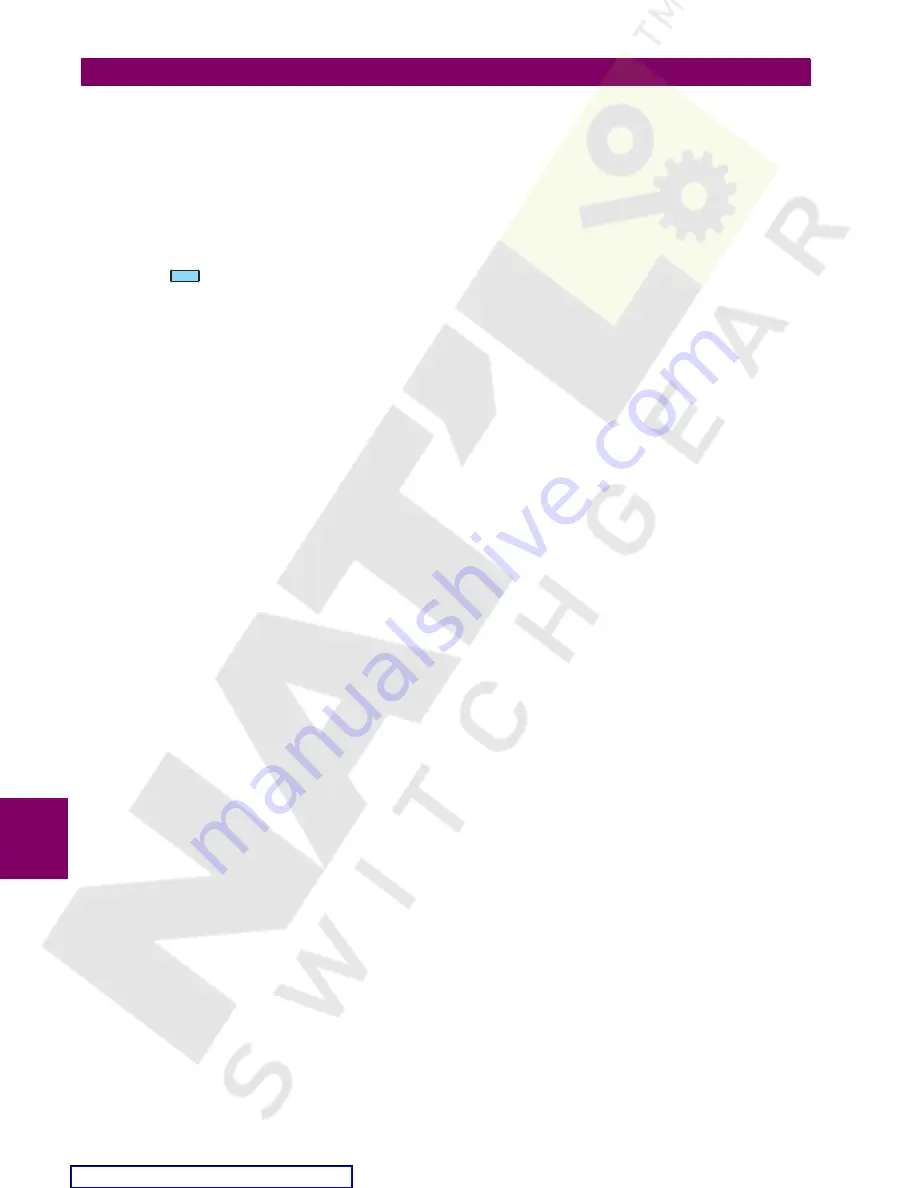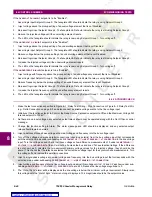
8-54
750/760 Feeder Management Relay
GE Multilin
8.6 CONTROL SCHEMES
8 COMMISSIONING TESTS
8
12. Assert the Initiate Reclosure logic input then immediately after assert the Remote Open logic input, initiating a reclose
and tripping the breaker. Check that the breaker trips and later recloses, and the displayed number of shots remaining
is reduced by one. Immediately assert the Initiate Reclosure and Remote Open logic inputs again, to initiate another
trip and reclose and the displayed number of shots remaining is reduced by one again. Repeat this procedure until the
programmed number of shots have been performed. Initiate Reclosure once more and the scheme should go to lock-
out; the Reclosure Lockout and Reclosure Disabled LEDs should now be on, and the Reclosure Enabled LED should
be off. Any output relays programmed to operate for Lockout should now be operated.
13. The event recorder should have recorded each logic input for Initiate Reclosure, each Reclose, and Reclosure Lock-
out. Check the interval of dead time for each shot in the event recorder.
14. Press the
key. Lockout should be canceled and the displayed number of shots should return to the programmed
value (the event recorder should record this reset.) Check that the Reclosure Lockout and Reclosure Disabled LEDs
are off, and the Reclosure Enabled LED is now on. Any output relays operated above should now be de-energized.
Close the breaker.
15. Repeat Step 12. Assert a Close command, either locally or remotely, and observe that lockout is reset at the end of the
AR BLOCK TIME UPON MANUAL CLOSE
setpoint, with indications as above.
16. Set a current level above the pickup threshold of any time overcurrent element and turn the current off.
17. Repeat Step 12. Assert a Close command, either locally or remotely, and turn the current on. Check that lockout is not
reset at the end of the manual close blocking time interval, and the breaker eventually trips. Turn the current off.
If Breaker Operation Failure, and/or Breaker Failure features are Operational, use the following procedure:
1.
Open test switch SW9 to prevent a trip command from the relay from operating the breaker.
2.
Enable one of the overcurrent elements by setting its function to "Trip + AR".
3.
Inject a current above the pickup level of both the operational overcurrent feature and the Breaker Failure Current into
the relay, until the feature sends a trip, which will also initiate reclosure. After the failure delay time, a breaker failure
condition will be determined, which should immediately set the reclose scheme to the Lockout state, turning the Reclo-
sure Lockout LED on.
4.
Turn the injected current off and Reset the relay. Disable the overcurrent element and close both the breaker and SW9.
Use the following procedure to test Autoreclose Current Supervision. Note that the number of reclosure shots setting con-
trols the messages in this group. If four (4) shots are programmed, all messages are available. If three (3) shots are pro-
grammed, the
3 SHOTS FOR CURRENT ABOVE
setpoint is not available on the relay. If two (2) shots are programmed, the
3
SHOTS FOR CURRENT ABOVE
and
2 SHOTS FOR CURRENT ABOVE
setpoints are not available. This procedure assumes four (4)
shots are programmed.
1.
Close the breaker and wait until reclosure is enabled.
2.
Verify that the
A1 STATUS
ÖØ
AR
ÖØ
AR SHOTS REMAINING
value is “0”.
3.
Open SW9 so the breaker cannot trip. Inject current and slowly ramp higher until an instantaneous feature sends a trip,
which also initiates reclosure. The value displayed should be 4 (it has not yet decremented).
4.
Continue to very slowly increase the current until the value displayed becomes 3. Continue to very slowly increase the
current, until the value displayed sequentially becomes 2 and then 1, at the currents programmed. Very slowly
increase the current, at the current programmed, until the relay goes to Lockout.
Use the following procedure to test Autoreclose Zone Coordination:
1.
Set the
MAX NUMBER OF RECLOSURE SHOTS
to “4”. Set the test set to a current level above the
PHASE CURRENT
INCREASE
setpoint, and ensure that the neutral current is below the
NEUTRAL CURRENT INCREASE
setpoint by making
this value larger. Turn on the current. Then, before the
MAX FAULT CLEARING TIME
has elapsed, turn off the current. The
AR SHOT NUMBER IN EFFECT
should have been incremented. Reset the relay. Turn on the current. Then, after the
MAX
FAULT CLEARING TIME
has elapsed, turn off the current. The
AR SHOT NUMBER IN EFFECT
should not have been incre-
mented. Reset the relay.
2.
Set the current level below the
PHASE CURRENT INCREASE
setpoint value. Turn the current on and then off. The
AR
SHOT NUMBER IN EFFECT
value should not change.
3.
Set the current level above the
PHASE CURRENT INCREASE
setpoint value, but below the
NEUTRAL CURRENT INCREASE
setpoint value. Turn the current on and then off. The
AR SHOT NUMBER IN EFFECT
value should increment by one.
RESET
















































